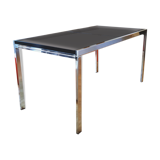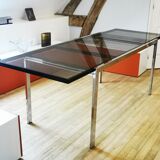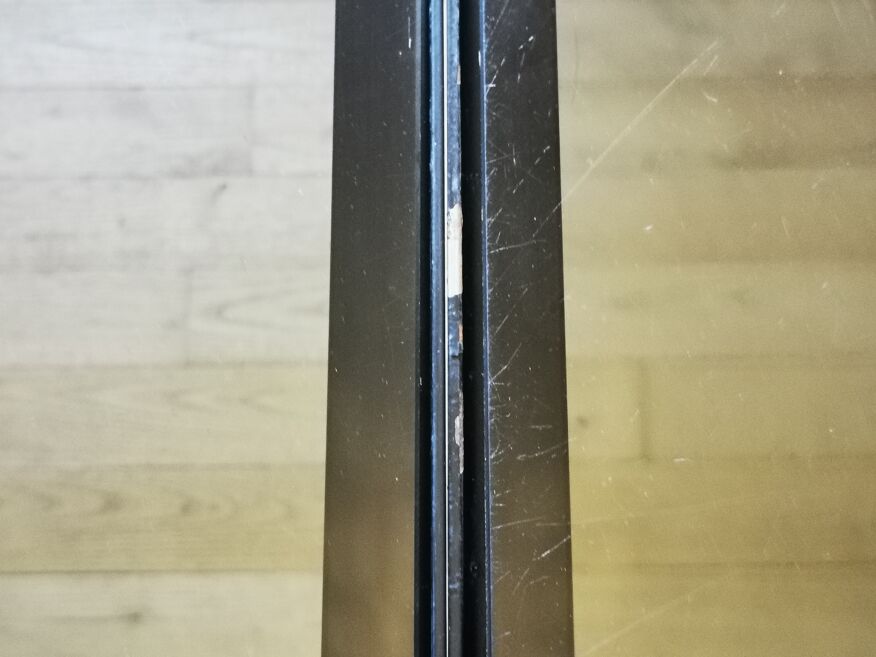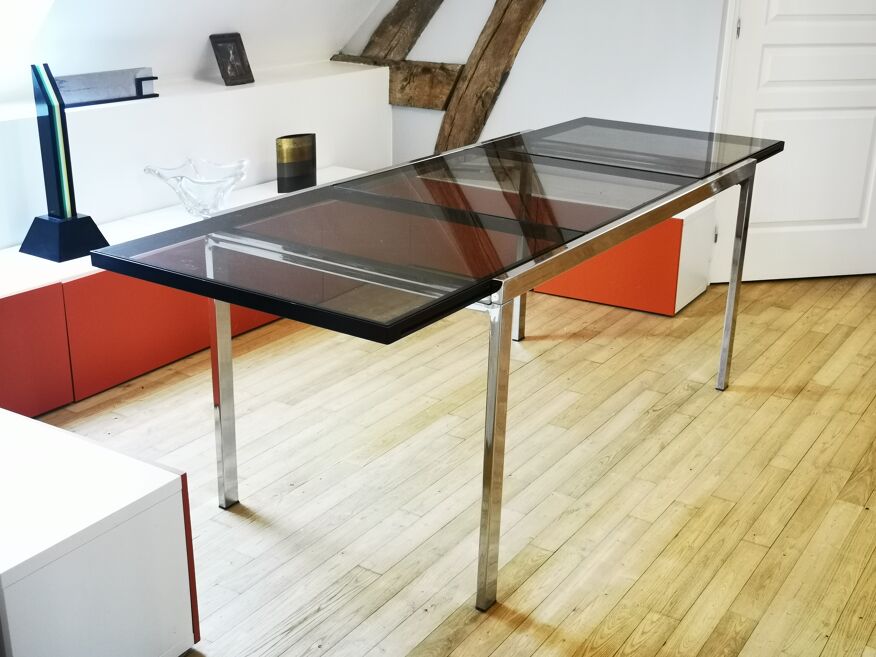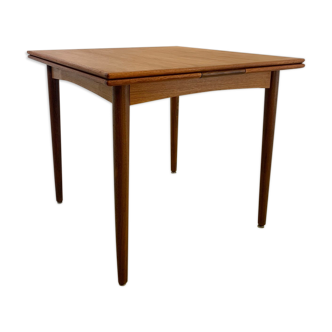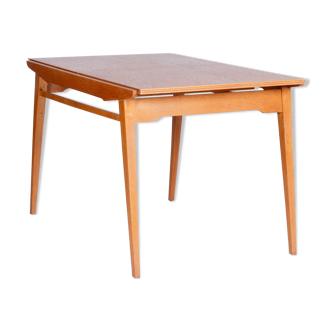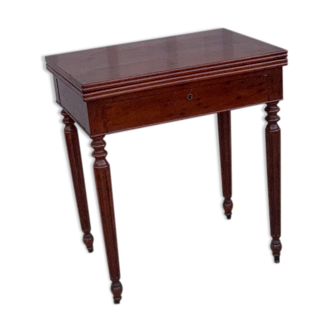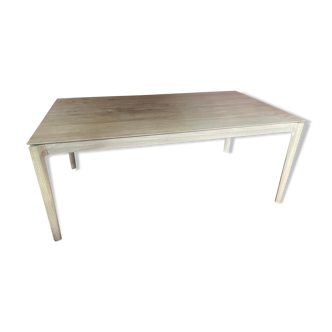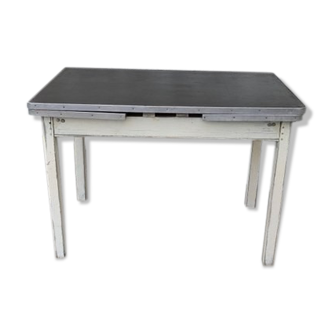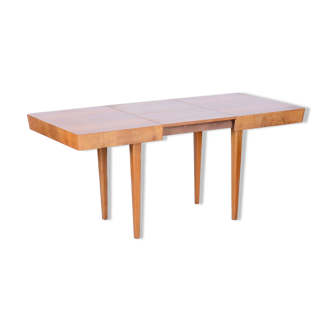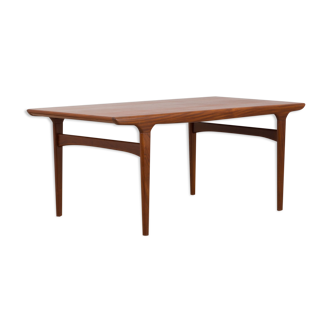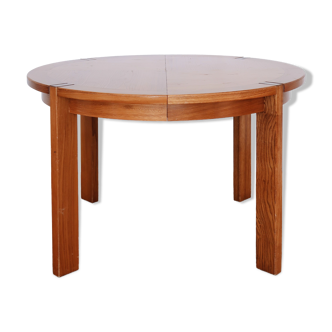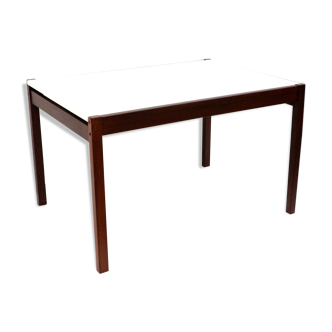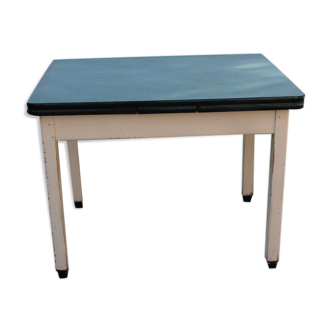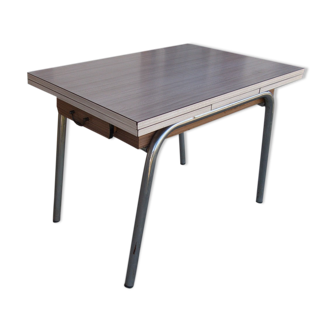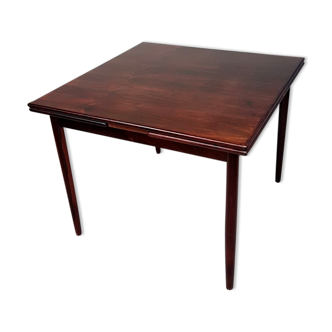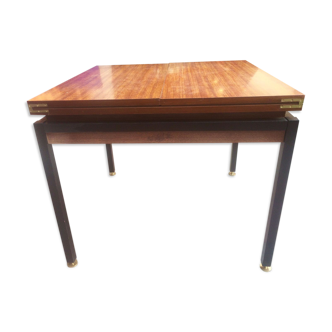Extensible dining table in chromed metal and smoked glass Milo Baughman for Directional USA circa 1970
- H76 x W155 x D80
- metal
- silver (Color)
🙈 Oops, this product is already sold or unavailable. Discover our 1500 new products or products similar to this item !
Description
Extensible dining table by Milo Baughman for DIA (Design Institute of America) in chrome-plated and black lacquered metal, resting on four rectangular section legs. The top is made up of 2 sheets of smoked glass in a black lacquered frame, opening to allow a third sheet of smoked glass to rise. Circa 1970. Top. : 76 cm- Dimensions when closed : 155 x 79,5 cm- Dimensions when open: 227.5 x 79.5 cm Small black lacquer jumps, tiny shine on one of the glass shelves at an angle. Born in 1923 in Kansas, Kansas, Milo Baughman is a remarkably productive designer, teacher and author whose aesthetic sensibility has played a major role in defining the modern mid-century style in the United States. He trained in Long Beach, California. He has been interested in art from a young age. At the age of 13, he designed the architectural floor plan of his parents' home, where he lived for 34 years. After high school, he served in the United States Air Force between 1941 and 1945. After that, he studied product design and architecture at the California Institute of Arts in Los Angeles County, and designed windows for Frank Brothers, the first modern furniture shop on the West Coast. In 1947, Milo Baughman launched his design agency in Los Angeles, designing high-end everyday furniture in Modernist and Art Deco styles, a mix that is now called the "Hollywood Regency". Milo Baughman's designs at this time include the classic California Modern collection for Glenn of California (in collaboration with Swedish-American designer Greta Magnusson Grossman), and a series of metal dining tables for Pacific Iron, one of which appears in a show home at MoMA in New York. In the early 1950s, Milo Baughman travelled to the East Coast, designing collections for companies such as Macy's, Drexel and Winchendon Furniture. In 1951, The New York Times praised his work. Around 1953, he left to find partners at West Point, the nerve centre of furniture production in North Carolina at the time. While most companies found his style too modern, Thayer Coggin Inc. recognized his potential at first glance. A handshake, and there they went for a collaboration that would last 50 years. From 1953 to 2003, the duo collaborated on numerous collections of modern mid-century furniture, characterized by bold but controlled proportions and quality materials with sophisticated finishes. Milo Baughman loves chrome bases, varnished wood and quilted upholstery fabrics. Among the fruits of this collaboration are the Chair 820-400 (1954), the Sofa 955-304 (1954), the Milo Armchair 951-103 (1962), the T-Back Armchair 989-103 (1963), the Viceroy Reclining Chair (1965), the Wave Chair (1960s) and the Circle Sectional 1224 (1970s). Throughout his career, Milo Baughman has worked for other companies such as Arch Gordon, Design Institute America, Directional, George Kovacs, Henredon, The Inco Company, Mode Furniture and Murray Furniture, among others. In 1987, Milo Baughman was inducted into the Furniture Hall of Fame. His designs have been shown in exhibitions such as High Styles: Twentieth Century American Design at the Whitney Museum of Art in New York (1985) and California Design, 1930-1965: Living in a Modern Way at LACMA in Los Angeles (2012). Baughman died in 2003.
Ref. : 7F88W7DK
- Dimensions :
- H76 x W155 x D80
- Color :
- silver (Color)
- Material :
- metal
- Style :
- design
Return your item within 14 days
Cherry-picked items
Carrefully selected sellers
100% secured payment
